Optimized Unconventional Geometric Gates in Superconducting Circuits
Abstract
1. Introduction
2. General Approach
2.1. Geometric Phase
2.2. Constructing the General Approach
3. Quantum Gates and Robustness
4. Implementation on Superconducting Circuits
4.1. One-Qubit Gate
4.2. Two-Qubit Gate
5. Conclusions
Author Contributions
Funding
Institutional Review Board Statement
Informed Consent Statement
Data Availability Statement
Conflicts of Interest
Appendix A. Derivation of the General Method
Appendix B. OSSP Gate
Appendix C. Dynamical Gate
Appendix D. DRAG Correction
Appendix E. Constant Detuning
References
- Shor, P.W. Polynomial-Time Algorithms for Prime Factorization and Discrete Logarithms on a Quantum Computer. SIAM J. Comput. 1997, 26, 1484. [Google Scholar] [CrossRef]
- Grover, L.K. Quantum Mechanics Helps in Searching for a Needle in a Haystack. Phys. Rev. Lett. 1997, 79, 325–328. [Google Scholar] [CrossRef]
- Lloyd, S. Almost Any Quantum Logic Gate is Universal. Phys. Rev. Lett. 1995, 75, 346–349. [Google Scholar] [CrossRef]
- Barenco, A.; Bennett, C.H.; Cleve, R.; Di Vincenzo, D.P.; Margolus, N.; Shor, P.; Sleator, T.; Smolin, J.A.; Weinfurter, H. Elementary gates for quantum computation. Phys. Rev. A 1995, 52, 3457–3467. [Google Scholar] [CrossRef] [PubMed]
- Berry, M.V. Quantal phase factors accompanying adiabatic changes. Proc. R. Soc. Lond. 1984, 392, 1802. [Google Scholar]
- Simon, B. Holonomy, the Quantum Adiabatic Theorem, and Berry’s Phase. Phys. Rev. Lett. 1983, 51, 2167–2170. [Google Scholar] [CrossRef]
- Jones, J. Geometric quantum computation using nuclear magnetic resonance. Nature 2000, 403, 869–871. [Google Scholar] [CrossRef]
- Wu, H.; Gauger, E.M.; George, R.E.; Möttönen, M.; Riemann, H.; Abrosimov, N.V.; Becker, P.; Pohl, H.; Itoh, K.M.; Thewalt, M.L.W.; et al. Geometric phase gates with adiabatic control in electron spin resonance. Phys. Rev. A 2013, 87, 032326. [Google Scholar] [CrossRef]
- Huang, Y.-Y.; Wu, Y.-K.; Wang, F.; Hou, P.-Y.; Wang, W.-B.; Zhang, W.-G.; Lian, W.-Q.; Liu, Y.-Q.; Wang, H.-Y.; Zhang, H.-Y.; et al. Experimental Realization of Robust Geometric Quantum Gates with Solid-State Spins. Phys. Rev. Lett. 2019, 122, 010503. [Google Scholar] [CrossRef]
- Aharonov, Y.; Anandan, J. Phase change during a cyclic quantum evolution. Phys. Rev. Lett. 1987, 58, 1593–1596. [Google Scholar] [CrossRef]
- Zhu, S.L.; Wang, Z.D. Implementation of Universal Quantum Gates Based on Nonadiabatic Geometric Phases. Phys. Rev. Lett. 2002, 89, 097902. [Google Scholar] [CrossRef] [PubMed]
- Zhao, P.Z.; Cui, X.D.; Xu, G.F.; Sjöqvist, E.; Tong, D.M. Rydberg-atom-based scheme of nonadiabatic geometric quantum computation. Phys. Rev. A 2017, 96, 052316. [Google Scholar] [CrossRef]
- Liu, B.J.; Song, X.K.; Xue, Z.Y.; Wang, X.; Yung, M.H. Plug-and-Play Approach to Nonadiabatic Geometric Quantum Gates. Phys. Rev. Lett. 2019, 123, 100501. [Google Scholar] [CrossRef] [PubMed]
- Wu, X.; Zhao, P.Z. Universal nonadiabatic geometric gates protected by dynamical decoupling. Phys. Rev. A 2020, 102, 032627. [Google Scholar] [CrossRef]
- Leibfried, D.; De Marco, B.; Meyer, V.; Lucas, D.; Barrett, M.; Britton, J.; Itano, W.M.; Jelenković, B.; Langer, C.; Rosenband, T.; et al. Experimental demonstration of a robust, high-fidelity geometric two ion-qubit phase gate. Nature 2003, 422, 412–415. [Google Scholar] [CrossRef] [PubMed]
- Ai, M.; Li, S.; Hou, Z.; He, R.; Qian, Z.; Xue, Z.; Cui, J.; Huang, Y.; Li, C.; Guo, G. Experimental Realization of Nonadiabatic Holonomic Single-Qubit Quantum Gates with Optimal Control in a Trapped Ion. Phys. Rev. Appl. 2020, 14, 054062. [Google Scholar] [CrossRef]
- Ai, M.; Li, S.; Hou, Z.; He, R.; Qian, Z.; Xue, Z.; Cui, J.; Huang, Y.; Li, C.; Guo, G. Experimental realization of nonadiabatic holonomic single-qubit quantum gates with two dark paths in a trapped ion. Fundam. Res. 2022, 2, 661–666. [Google Scholar] [CrossRef]
- Anandan, J. Non-adiabatic non-abelian geometric phase. Phys. Lett. A 1988, 133, 171–175. [Google Scholar] [CrossRef]
- Sjöqvist, E.; Tong, D.M.; Andersson, L.M.; Hessmo, B.; Johansson, M.; Singh, K. Non-adiabatic holonomic quantum computation. IOP Publ. 2012, 13, 103035. [Google Scholar] [CrossRef]
- Xu, G.F.; Zhang, J.; Tong, D.M.; Sjöqvist, E.; Kwek, L.C. Nonadiabatic Holonomic Quantum Computation in Decoherence-Free Subspaces. Phys. Rev. Lett. 2012, 109, 170501. [Google Scholar] [CrossRef]
- Yan, T.; Liu, B.; Xu, K.; Song, C.; Liu, S.; Zhang, Z.; Deng, H.; Yan, Z.; Rong, H.; Huang, K.; et al. Experimental Realization of Nonadiabatic Shortcut to Non-Abelian Geometric Gates. Phys. Rev. Lett. 2019, 122, 080501. [Google Scholar] [CrossRef] [PubMed]
- Feng, G.; Xu, G.; Long, G. Experimental Realization of Nonadiabatic Holonomic Quantum Computation. Phys. Rev. Lett 2013, 110, 190501. [Google Scholar] [CrossRef] [PubMed]
- Zhao, P.Z.; Wu, X.; Tong, D.M. Dynamical-decoupling-protected nonadiabatic holonomic quantum computation. Phys. Rev. A 2021, 103, 012205. [Google Scholar] [CrossRef]
- Zhang, X.D.; Zhu, S.L.; Hu, L.; Wang, Z.D. Nonadiabatic geometric quantum computation using a single-loop scenario. Phys. Rev. A 2005, 71, 014302. [Google Scholar] [CrossRef]
- Ota, Y.; Kondo, Y. Composite pulses in NMR as nonadiabatic geometric quantum gates. Phys. Rev. A 2009, 80, 024302. [Google Scholar] [CrossRef]
- Thomas, J.T.; Lababidi, M.; Tian, M. Robustness of single-qubit geometric gate against systematic error. Phys. Rev. A 2011, 84, 042335. [Google Scholar] [CrossRef]
- Zhu, S.L.; Wang, Z.D. Unconventional Geometric Quantum Computation. Phys. Rev. Lett. 2003, 91, 187902. [Google Scholar] [CrossRef]
- Zhao, P.Z.; Xu, G.F.; Tong, D.M. Nonadiabatic geometric quantum computation in decoherence-free subspaces based on unconventional geometric phases. Phys. Rev. A 2016, 94, 062327. [Google Scholar] [CrossRef]
- Li, K.Z.; Zhao, P.Z.; Tong, D.M. Approach to realizing nonadiabatic geometric gates with prescribed evolution paths. Phys. Rev. Res. 2020, 2, 023295. [Google Scholar] [CrossRef]
- Zhao, P.Z.; Li, K.Z.; Xu, G.F.; Tong, D.M. General approach for constructing Hamiltonians for nonadiabatic holonomic quantum computation. Phys. Rev. A 2020, 101, 062306. [Google Scholar] [CrossRef]
- Andersson, O. Holonomy in Quantum Information Geometry. arXiv 2019, arXiv:1910.08140. [Google Scholar]
- Lindblad, G. On the generators of quantum dynamical semigroups. Commun. Math. Phys. 1976, 48, 119–130. [Google Scholar] [CrossRef]
- Ji, L.N.; Ding, C.Y.; Chen, T.; Xue, Z.Y. Noncyclic Geometric Quantum Gates with Smooth Paths via Invariant-Based Shortcuts. Adv. Quantum. Technol. 2021, 4, 2100019. [Google Scholar] [CrossRef]
- Poyatos, J.F.; Cirac, J.I.; Zoller, P. Complete Characterization of a Quantum Process: The Two-Bit Quantum Gate. Phys. Rev. Lett. 1997, 78, 390–393. [Google Scholar] [CrossRef]
- Ding, C.Y.; Liang, Y.; Yu, K.Z.; Xue, Z.Y. Nonadiabatic geometric quantum computation with shortened path on superconducting circuits. Appl. Phys. Lett. 2021, 119, 184001. [Google Scholar] [CrossRef]
- Barends, R.; Kelly, J.; Megrant, A.; Veitia, A.; Sank, D.; Jeffrey, E.; White, T.C.; Mutus, J.; Fowler, A.G.; Campbell, B.; et al. Superconducting quantum circuits at the surface code threshold for fault tolerance. Nature 2014, 508, 500–503. [Google Scholar] [CrossRef]
- Krantz, P.; Kjaergaard, M.; Yan, F.; Orlando, T.P.; Gustavsson, S.; Oliver, W.D. A quantum engineer’s guide to superconducting qubits. Appl. Phys. Rev. 2019, 6, 021318. [Google Scholar] [CrossRef]
- Wang, T.; Zhang, Z.; Xiang, L.; Jia, Z.; Duan, P.; Cai, W.; Gong, Z.; Zong, Z.; Wu, M.; Wu, J. The experimental realization of high-fidelity ‘shortcut-to-adiabaticity’ quantum gates in a superconducting Xmon qubit. New J. Phys. 2018, 20, 065003. [Google Scholar] [CrossRef]
- Kjaergaard, M.; Schwartz, M.E.; Braumüller, J.; Krantz, P.; Wang, J.I.J.; Gustavsson, S.; Oliver, W.D. Superconducting Qubits: Current State of Play. Annu. Rev. Condens. Matter Phys. 2020, 11, 369–395. [Google Scholar] [CrossRef]
- Chu, J.; Li, D.; Yang, X.; Song, S.; Han, Z.; Yang, Z.; Dong, Y.; Zheng, W.; Wang, Z.; Yu, X.; et al. Realization of Superadiabatic Two-Qubit Gates Using Parametric Modulation in Superconducting Circuits. Phys. Rev. Appl. 2020, 13, 064012. [Google Scholar] [CrossRef]

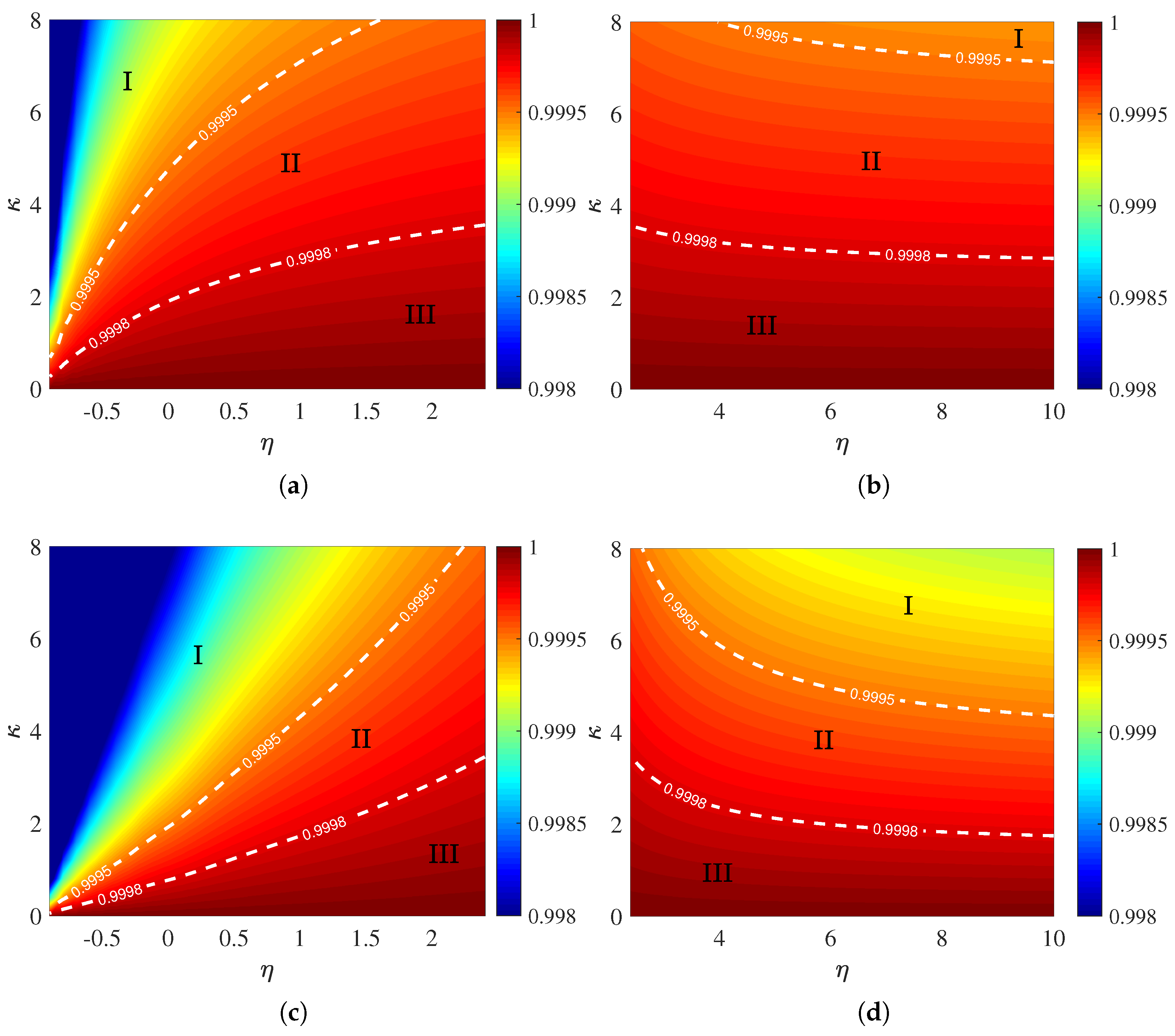
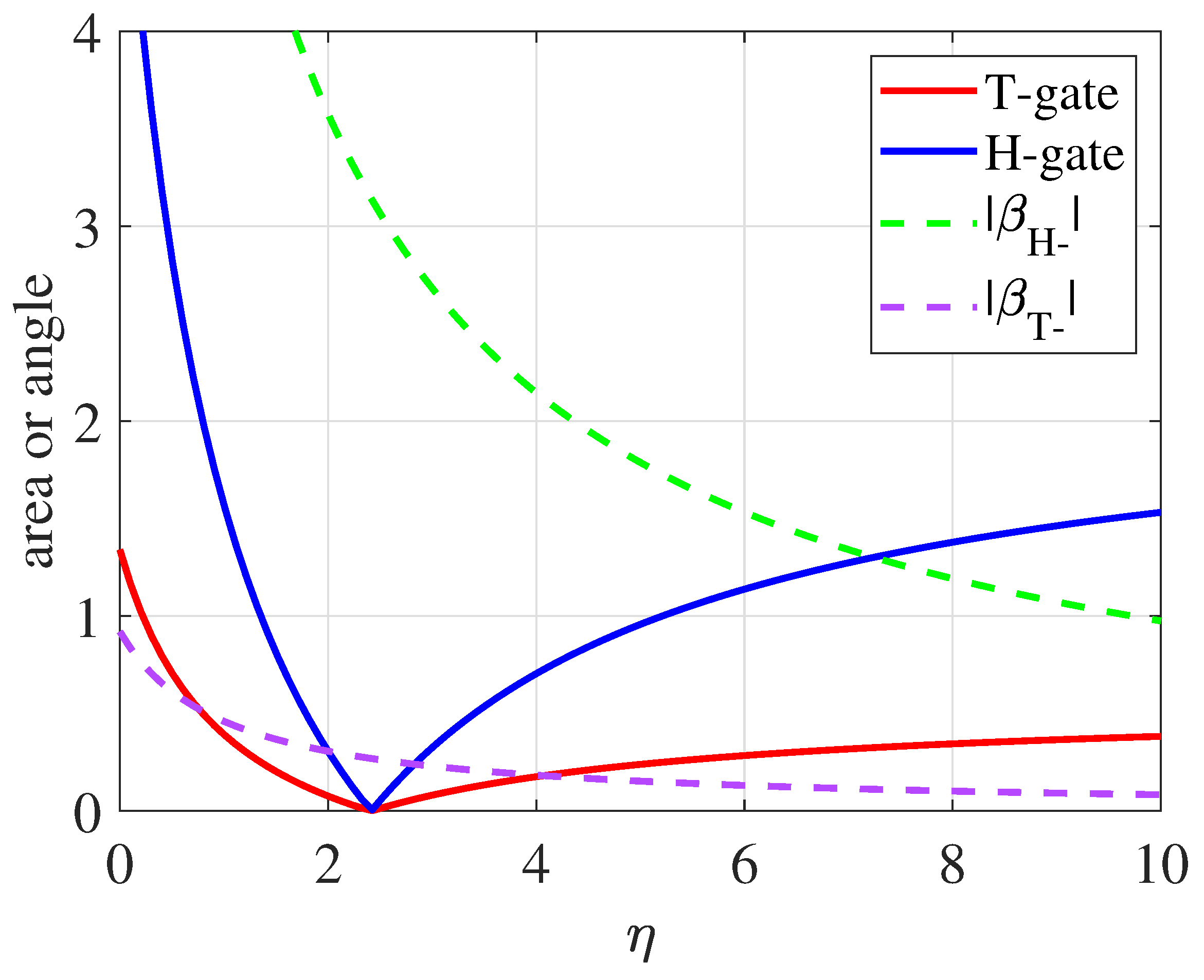
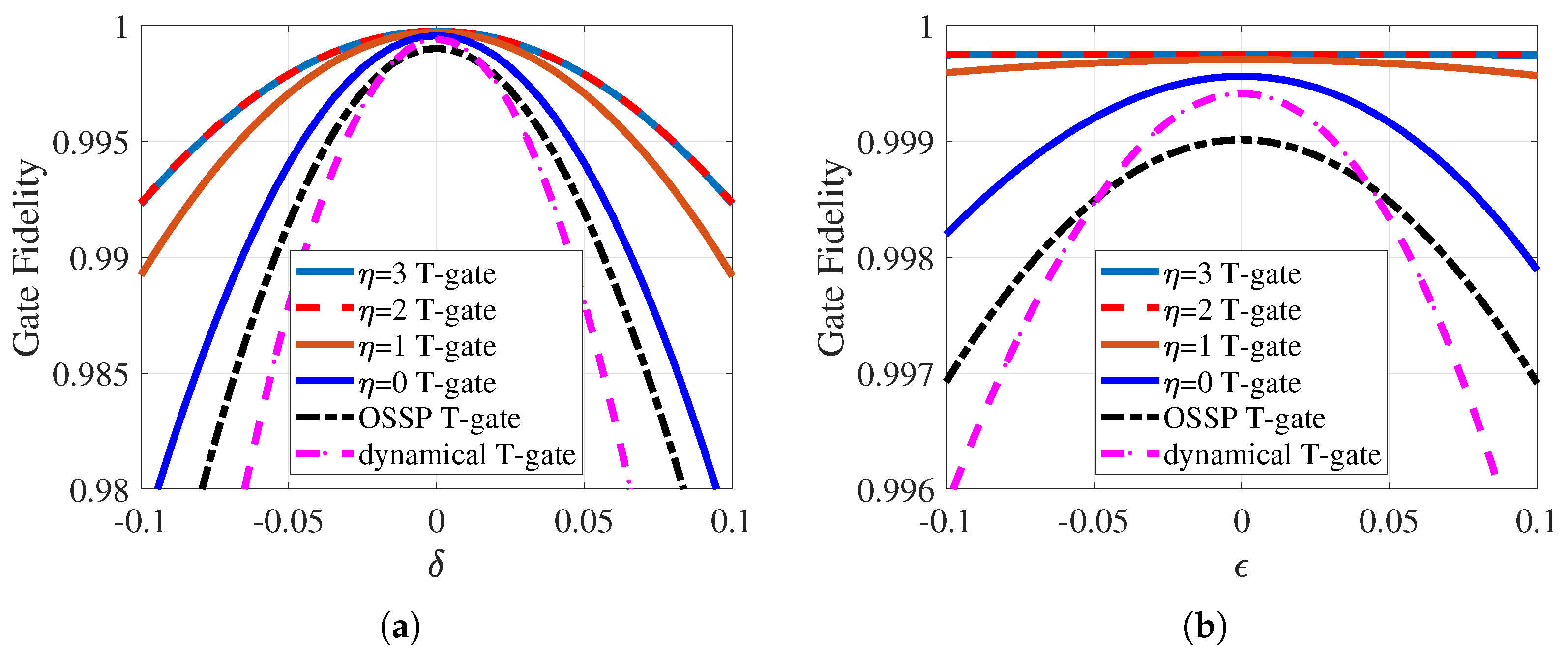
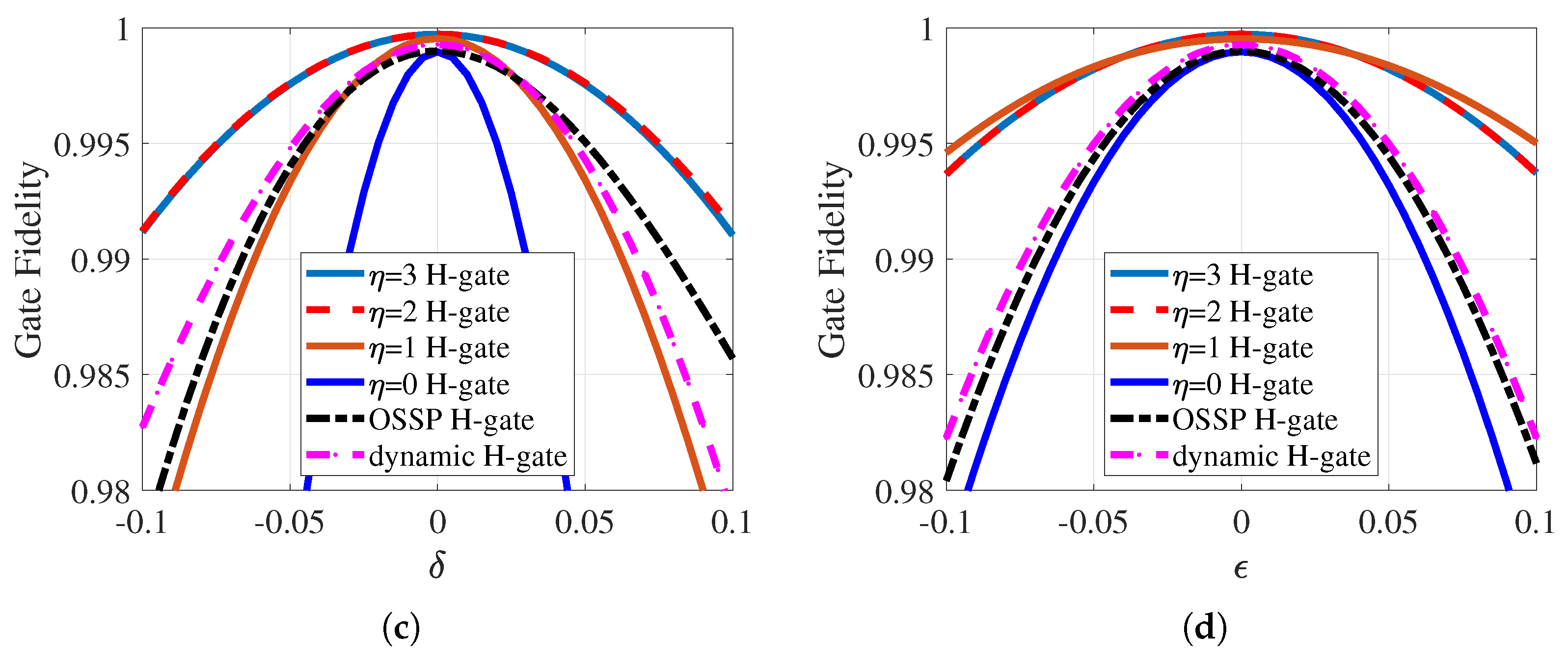
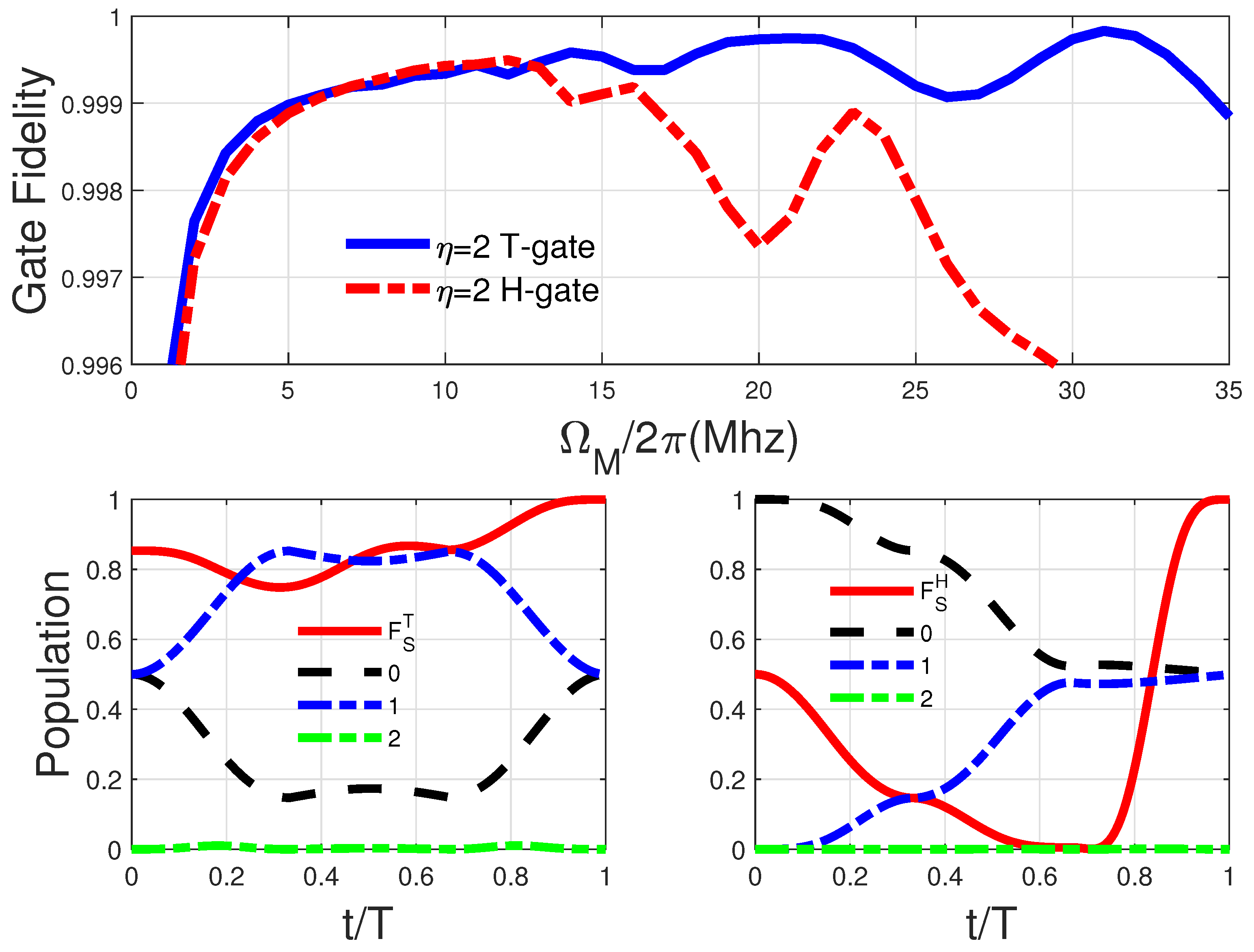
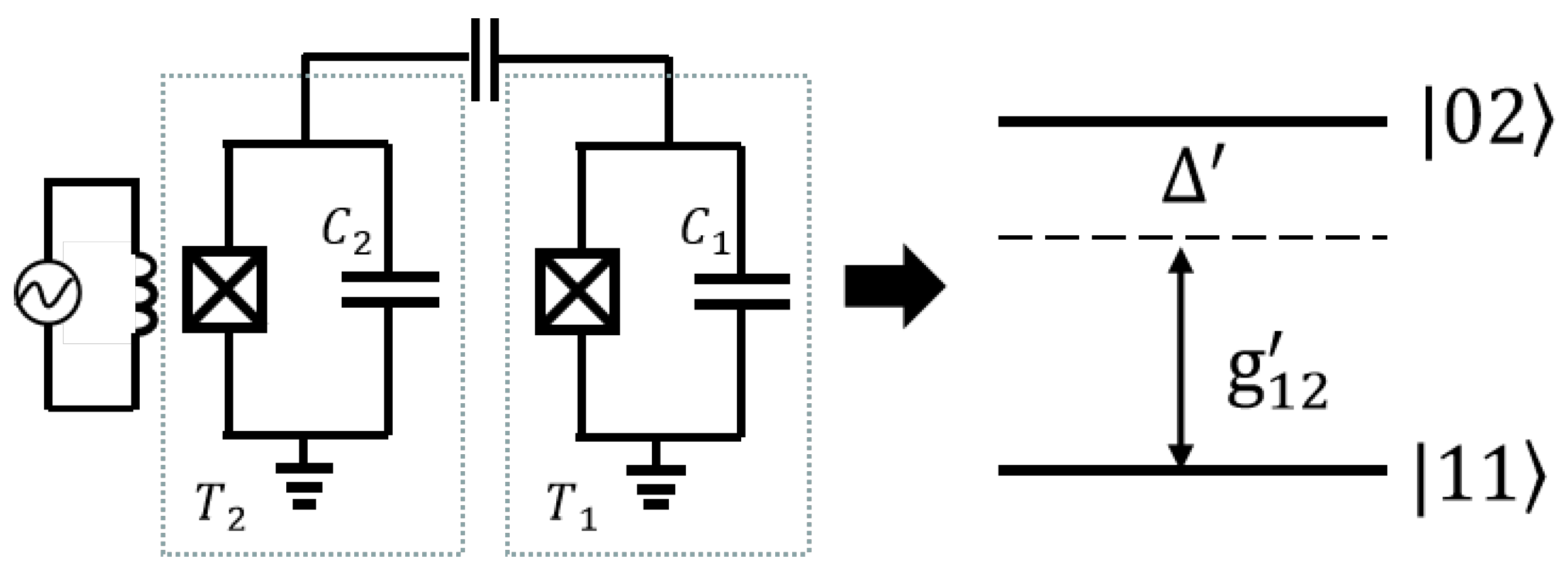
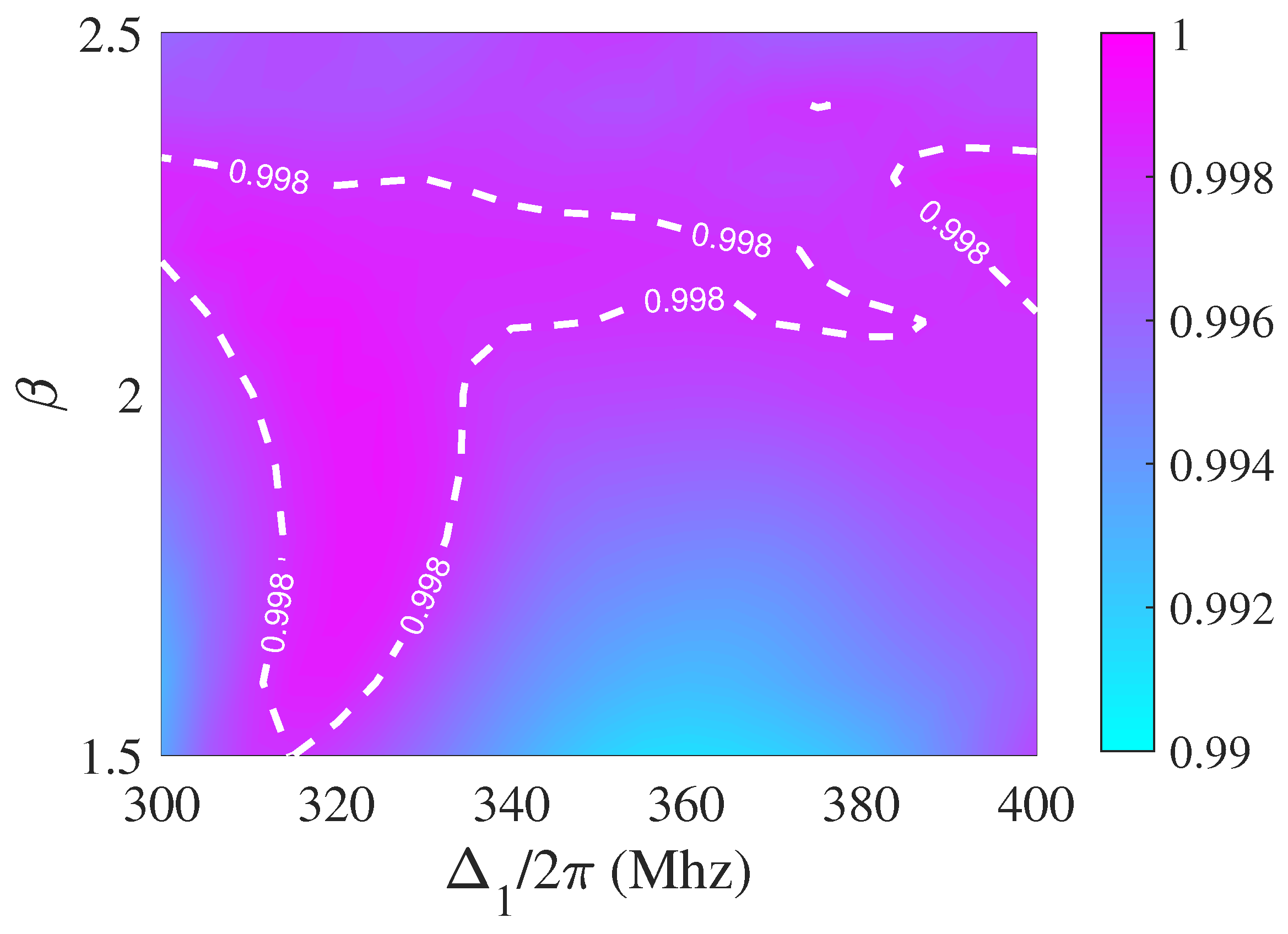
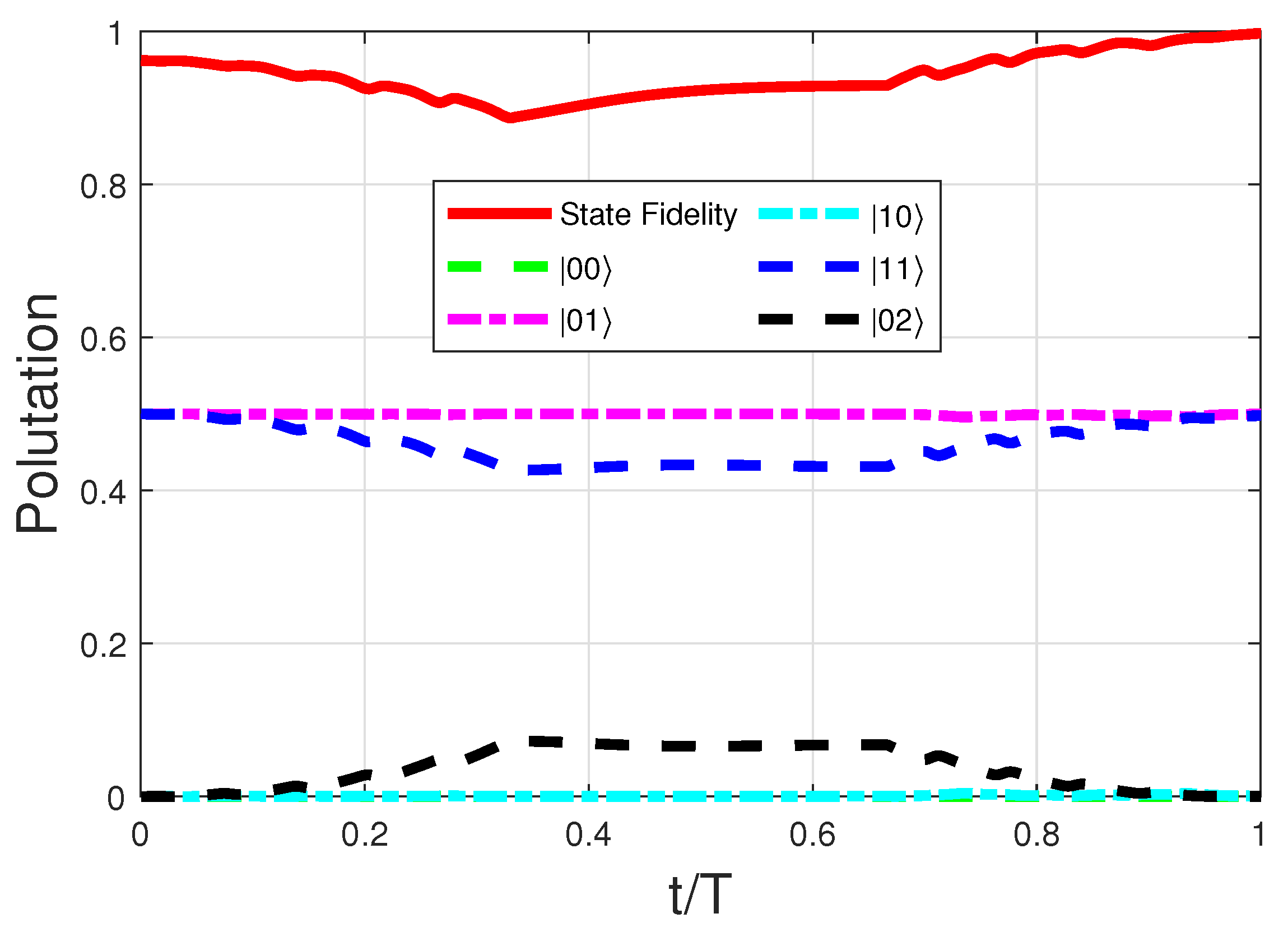
Disclaimer/Publisher’s Note: The statements, opinions and data contained in all publications are solely those of the individual author(s) and contributor(s) and not of MDPI and/or the editor(s). MDPI and/or the editor(s) disclaim responsibility for any injury to people or property resulting from any ideas, methods, instructions or products referred to in the content. |
© 2023 by the authors. Licensee MDPI, Basel, Switzerland. This article is an open access article distributed under the terms and conditions of the Creative Commons Attribution (CC BY) license (https://creativecommons.org/licenses/by/4.0/).
Share and Cite
Liu, Y.; Zhang, X. Optimized Unconventional Geometric Gates in Superconducting Circuits. Appl. Sci. 2023, 13, 4041. https://doi.org/10.3390/app13064041
Liu Y, Zhang X. Optimized Unconventional Geometric Gates in Superconducting Circuits. Applied Sciences. 2023; 13(6):4041. https://doi.org/10.3390/app13064041
Chicago/Turabian StyleLiu, Yueheng, and Xinding Zhang. 2023. "Optimized Unconventional Geometric Gates in Superconducting Circuits" Applied Sciences 13, no. 6: 4041. https://doi.org/10.3390/app13064041
APA StyleLiu, Y., & Zhang, X. (2023). Optimized Unconventional Geometric Gates in Superconducting Circuits. Applied Sciences, 13(6), 4041. https://doi.org/10.3390/app13064041




